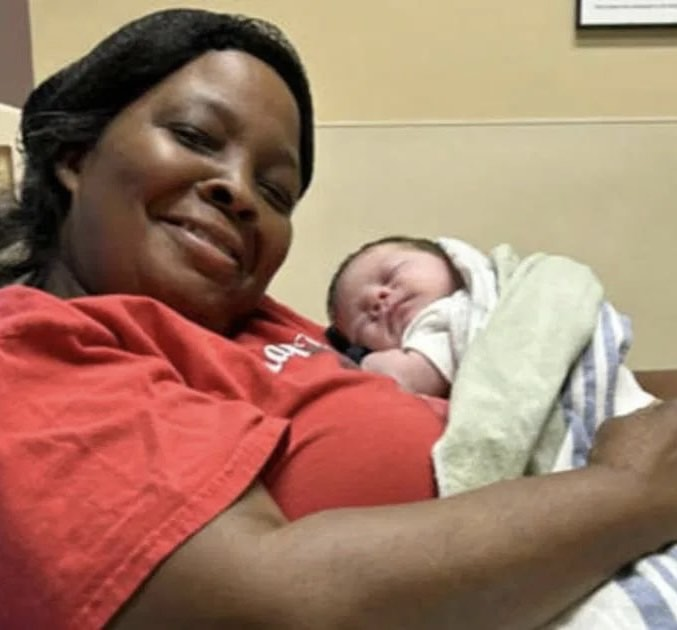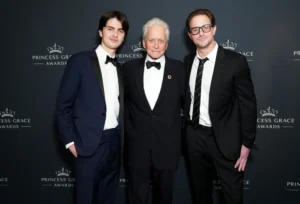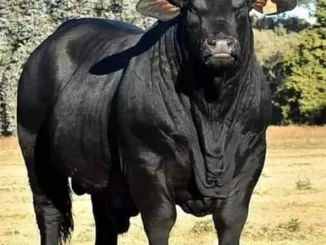Ali MacGraw became a Hollywood superstar overnight. But just as quickly as she rose to fame, she disappeared from show business altogether.
Today, the 84-year-old actress has settled down in a remote and tiny town, and she’s aging gracefully with her grey hair.

Ali MacGraw
Ali MacGraw – born Elizabeth Alice MacGraw – was born on April 1, 1939, in Pound Ridge, New York, USA. Her mother, Frances, was an artist and worked at a school in Paris, later settling in Greenwich Village. She married Richard MacGraw, who was also an artist. In 1939, Ali was born.
Ali’s father Richard supposedly had issues from his own childhood which made him a little bit different from others.
He had survived a terrible childhood in an orphanage, running away at the age of 16 to go to sea. He would later study at an art school in Munich, Germany.
“Daddy was frightened and really, really angry. He never forgave his real parents for giving him up,” Ali explained, saying said her father’s adult life was spent “suppressing the rage that covered all his hurt.”
Ali MacGraw – childhood
Money was short for their family, too. Frances and Richard, together with Ali and her brother, Richard Jr, had to move into a house on a Pound Ridge wilderness preserve which they shared with an elderly couple.
“There were no doors; we shared the kitchen and bathroom with them,” Ali said. “It was utter lack of privacy. It was horrible.”
Mom Francis worked with several commercial-art assignments and supported the family. At the same time, Richard had a hard time selling his paintings, and as a result became very frustrated. Ali’s brother Richard became a victim for his anger at home.
“On good days he was great, but on bad days he was horrendous,” she recalled. “Daddy would beat my brother up, badly. I was witness to it, and it was terrible.”
Ali was the daughter of artists, and she knew that she, too, wanted to go into a creative line of work as she got older. She earned a scholarship at the prep school Rosemary Hall, and in 1956, she moved to study at Wellesley College in Massachusetts.
By the age of 22, Ali MacGraw moved to New York and got her first job as an assistant editor at Harper’s Bazaar, working with photographers as an assistant.
Fashion work in New York
Fashion editor Diana Vreeland hired Ali as, what she recalls as, a “flunkie”. Ever seen the film The Devil Wears Prada? Well, it was pretty much that.
“It was ‘Girl! Get me a pencil!’,” MacGraw recalled.
The future Hollywood celebrity worked her job as an assistant for several months. Then, about six months in, fashion photographer Melvin Sokolsky noticed her beautiful looks, and Ali MacGraw was hired as a stylist,and given a better salary. She’d end up staying in that position for six years.
“I don’t know where she got this work ethic, but Ali would come in at eight a.m., and many times I’d come back at one in the morning and she would still be doing things for the next day,” Ruth Ansel, a former art director of Vanity Fair and Harper’s Bazaar recalls.
Ali was great as a stylist. But soon, she was asked to work in front of the cameras as a model. It didn’t take long before she was on magazine covers all over the world, even appearing in television commercials. For thing led to another, and Ali tumbled headfirst into the profession of acting.

She had been sketched nude by Salvador Dali a couple of years earlier. But when the surrealist artist started sucking her toes, MacGraw decided that she’d rather be an actress than a model.
Ali MacGraw – films
Ali went straight from an unknown stylist and into the world of cinema, and boy, did she do it with a bang.
She was untutored in the art of film, which gave her acting another dimension. Her natural beauty was stunning, and the audience loved her.
Following a small role in A Lovely Way to Die (1968), she was asked to star in the 1969 film Goodbye, Columbus. It turned out to be a great call, with MacGraw receiving a Golden Globe for Most Promising Newcomer – Female. The following year, she got her big international breakthrough with a role that would pretty much sum up her career.
Ali MacGraw had received a script from her agent. She’d read it and wept twice because of how much she loved it. She decided she really wanted a part in it, and got herself a meeting with the film’s producer Robert Evans – who at the time was Paramount Picture’s head of production – at the Beverly Hills Hotel’s Polo Lounge. Not only did Evans think she was perfect for the part in the movie Love Story, he absolutely fell in love with her.
MacGraw – playing the role of Jenny – acted alongside Ryan O’Neal in the movie Love Story. The American romantic drama film, in which Ali played a working-class college student, became a smash hit.

Love Story hit the cinemas in 1970, and wow did the audience cherish it. It became the No. 1 film in the United States, and at the time, it was the sixth highest grossing movie in history in the US and Canada.
Award-winning actress
MacGraw earned an Academy Award nomination for her role, and the film itself earned her another win and five Academy Award Nominations. She also won herself a second Golden Globe as Best Actress in a Motion Picture – Drama.
Film producer Robert Evans not only loved her on screen, he had fallen in love with her in real life, and that love was reciprocated. In 1969, the couple tied the knot, and two years later, they welcomed their son, Josh Evans.
Ali MacGraw was the hot new star of the 1970s, but her private life and marriage with Evans would soon come to an end. Steve McQueen had visited their home to ask her to star alongside him in The Getaway, and the two Hollywood stars clicked right away.
“I looked in those blue eyes, and my knees started knocking,” MacGraw recalled. “I became obsessed.”

MacGraw and McQueen had an affair, and she soon left Evans to live with the actor in Malibu, along with her son Josh.
“Steve was this very original, principled guy who didn’t seem to be part of the system, and I loved that,” she said.
Ali MacGraw – Steve McQueen
But after a while, Ali realized that Steve McQueen had his own problems. Following his father abandoning his mother, a then-14-year-old Steve was sent to a school for delinquent children. MacGraw said he never trusted women after that.

(Photo by Silver Screen Collection/Getty Images)
He didn’t like that she worked and had her own career. For a while, Ali stayed home to raise their sons. But her husband’s demands were something Ali simply couldn’t accept in the long run.
Not only that, but he’d explode if she even looked at another man. He also wanted her to sign a prenuptial agreement, promising not to ask for anything if they’d divorce. She abided by the agreement when they did divorce in 1978.
“I couldn’t even go to art class because Steve expected his ‘old lady’ to be there every night with dinner on the table,” she recalled.
“Steve’s idea of hot was not me. He liked blond bimbos, and they were always around.”

This was the start of a pretty dark time in MacGraw’s life. She arrived on set to shoot the 1978 film Convoy both drunk and high, which prompted her to quit drugs.
A former prison guard from Mississippi loses her job for caring for an inmate’s newborn, and her perspective

Roberta Bell’s journey is a moving exampl
influence that one person can have when motivated by empathy. Roberta, a 58-year-old mother of five and grandma of eight who resides in the charming city of Vicksburg, Mississippi, is regarded by many as a hero. Her life took an unexpected turn this year, showing the world the power of love and bravery to transform lives.
Roberta met pregnant convict Katie Bourgeois, who was almost out of prison, while she was a correctional officer at the Louisiana Transitional Center for Women. Katie was in a terrible predicament because she had no relatives to support her after her kid was born. Roberta took the crucial choice to take care of the baby until Katie could return home while Katie was unable to do so.

There were, however, repercussions to this choice. Roberta was sacked from her job at the correctional facility after her supervisor saw a conflict of interest in her conduct. For Roberta, though, it was a minimal cost. Kayson, Katie’s son, was born just over a week after she lost her job. Roberta had been looking forward to his visit to the hospital. She brought him home, clothed him tenderly, and held him in her arms, showing him the tenderness and love of a mother.
Kayson was under Roberta’s care for two months before Katie was able to see her son again. Even though Roberta was going through a difficult time personally, her compassion and selflessness were evident when she said goodbye to the infant to whom she had been so close. Millions of people were moved by her heartfelt and real narrative of generosity, which struck a chord with people everywhere.
Donations poured in from people moved by her story; diapers, formula, and other necessities arrived. Numerous kind presents from strangers adorned Roberta’s living room. Even more astonishingly, their contributions added up to an incredible $90,000. Even though she was unemployed, Roberta kept giving back, using some of the money she was given to assist a fellow pregnant prisoner who was having financial difficulties.

That was not the end of Roberta’s quest. Rather, it opened a new chapter in her life. Since then, she has started a new project that she is very enthusiastic about called The Serenity House. The Serenity House, which is situated in the serene Mississippi countryside, is being renovated to serve as a haven for women reintegrating into society after serving time in jail. Roberta is committed to giving these women a place where they can find direction, support, and a feeling of belonging, just as much as she had loved her job at the prison.
Roberta gladly answers every call that comes in asking for her assistance; her phone is always vibrating. Her experience is a prime illustration of how one individual, driven by compassion, understanding, and a steadfast faith in second chances, may significantly impact the lives of others.



Leave a Reply